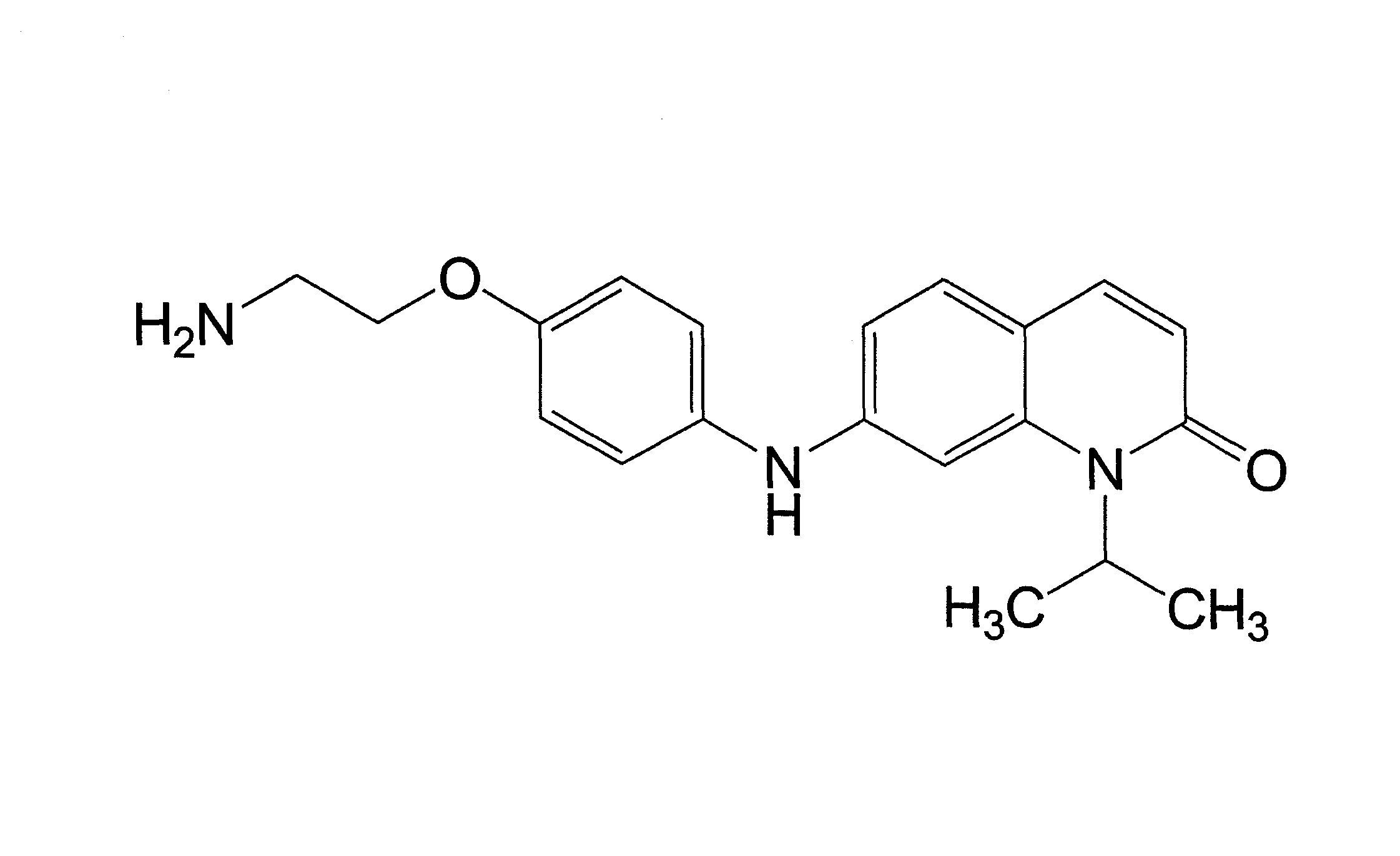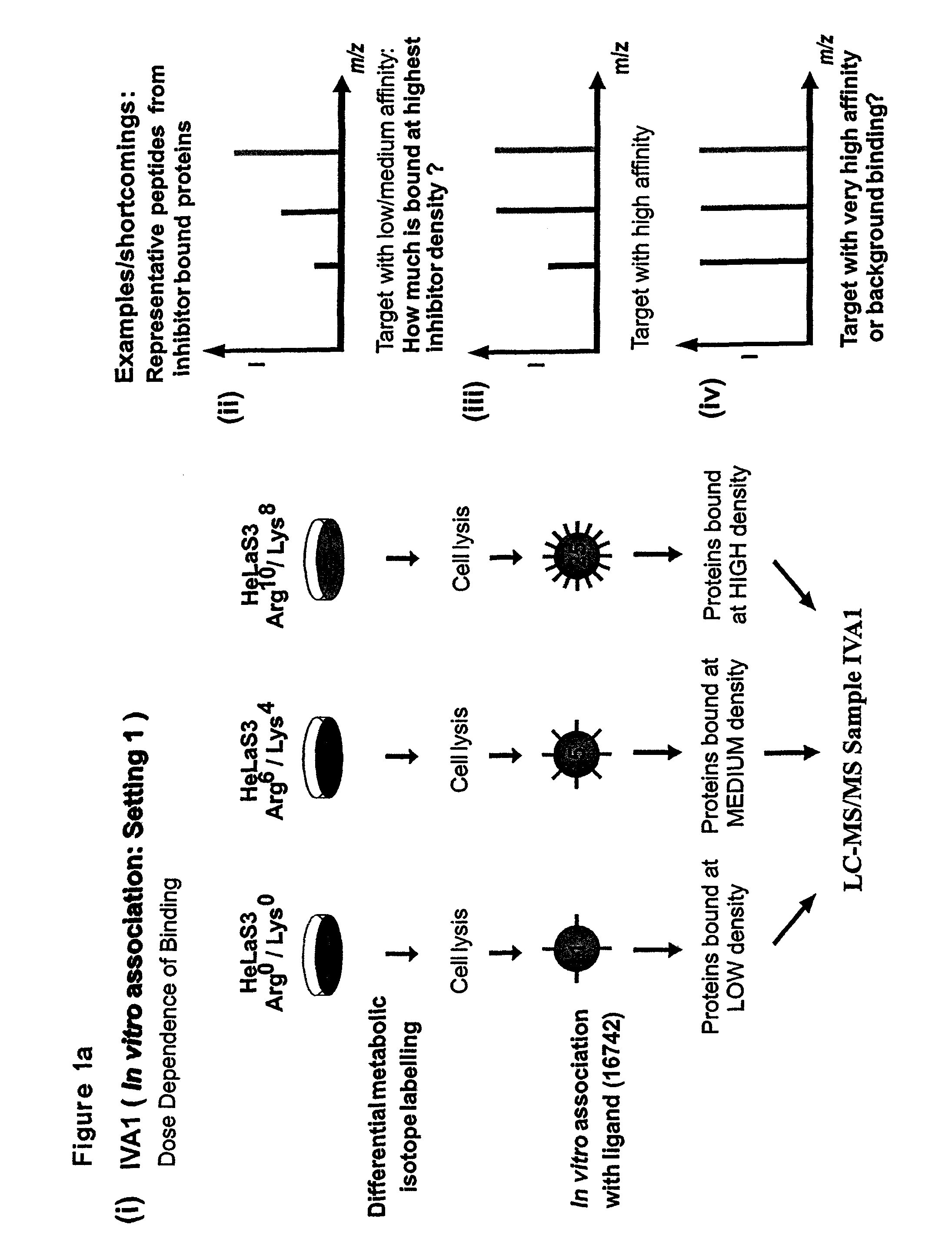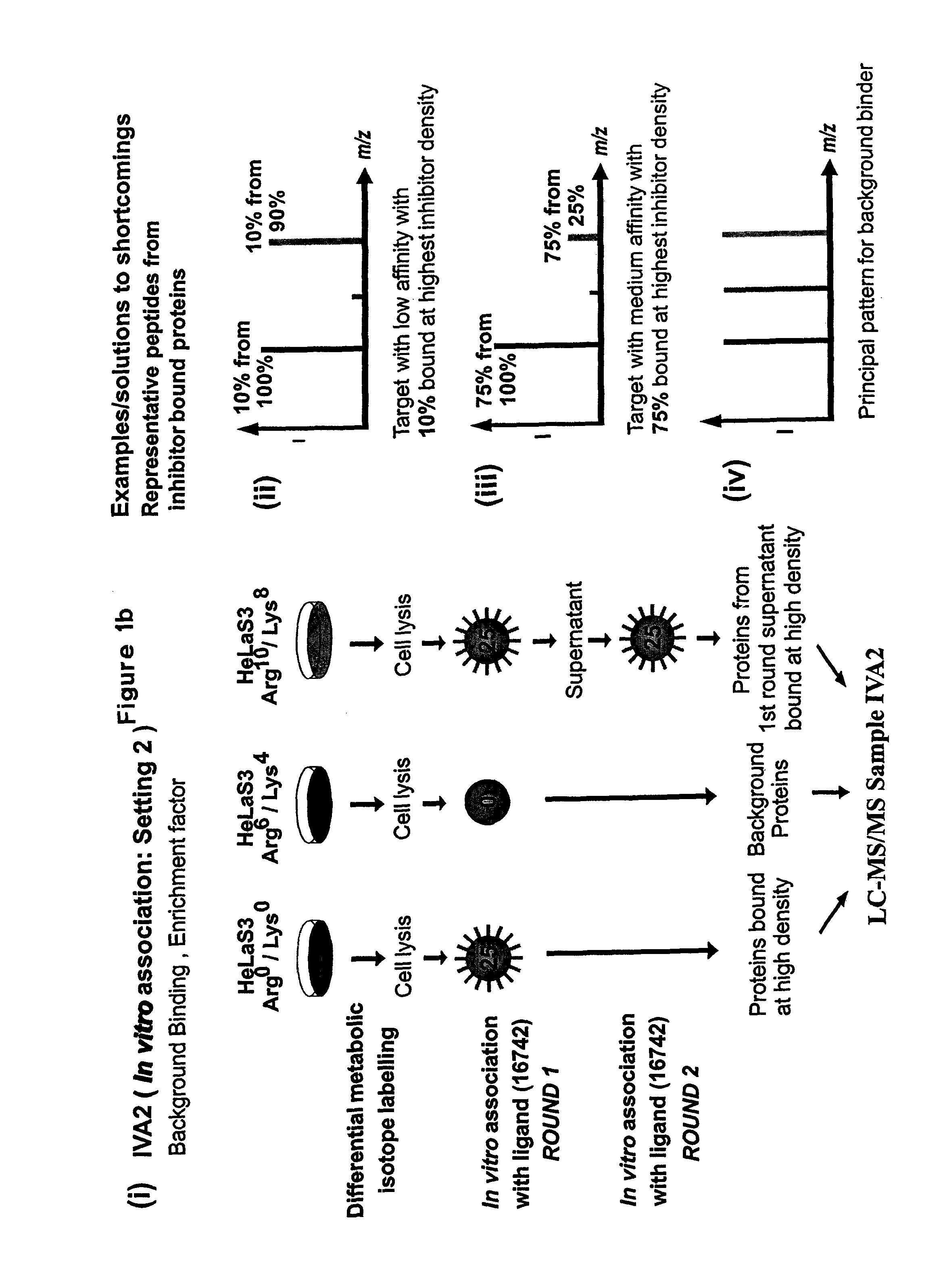Proteome-wide quantification of small molecule binding to cellular target proteins
a small molecule and protein technology, applied in the field of proteome-wide quantification of small molecule binding to cellular target proteins, can solve the problems of inability to infer the affinities of the inhibitor towards its cellular binding partner from the ms data, the underrepresentation or the complete absence of potential targets from other enzyme classes in the screening format, and the inability to characterize the pharmacological effect of the inhibitor
- Summary
- Abstract
- Description
- Claims
- Application Information
AI Technical Summary
Benefits of technology
Problems solved by technology
Method used
Image
Examples
example 1
Compound Synthesis and Covalent Coupling
[0160]The kinase inhibitor V16742 was synthesised on the basis of described synthetic routes (Moloney, G. P. et al. A novel series of 2,5-substituted tryptamine derivatives as vascular 5HT1B / 1D receptor antagonists. J Med Chem 40, 2347-62 (1997). Barvian, M. et al. Pyrido[2,3-d]pyrimidin-7-one inhibitors of cyclin-dependent kinases. J Med Chem 43, 4606-16 (2000)). AX14596 and gefitinib were synthesized as described previously (Brehmer, D. et al. Cellular targets of gefitinib. Cancer Res 65, 379-382 (2005)). V16742 was coupled to epoxy-activated Sepharose beads at three different concentrations and the relative concentration of covalently immobilized inhibitor on the distinct resins was determined by spectrophotometry (here 1-, 5- and 25-fold of the lowest concentration). Two volumes of AX14596 at a concentration of 2.5 mM were coupled to one volume of epoxy-activated Sepharose beads (GE Healthcare) as previously described (Wissing, J. et al. P...
example 2
Cell Culture and In Vitro Association Experiments
[0161]For stable isotope labelling with amino acids in cell culture (SILAC), HeLa S3 cells were grown in Dulbecco's modified Eagle's medium (DMEM) containing 10% dialysed fetal bovine serum (Invitrogen) and either unlabelled L-arginine)(Arg0) at 42 mg I−1 and L-lysine (Lys0) at 71 mg I−1 or equimolar amounts of the isotopic variants L-arginine-U-13C6 (Arg6) and L-lysine-2H4 (Lys4) or L-arginine-U-13C6—14N4 (Arg10) and L-lysine-13C6—15N2 (Lys8) (from Cambridge Isotope Laboratories).
[0162]Using the three populations of SILAC-labelled cells and the three different inhibitor resins, two parallel experiments termed as IVA1 (In Vitro Association, Setting 1) and IVA2 (In Vitro Association, Setting 2) were performed. For in vitro association with inhibitor affinity beads, differentially labeled HeLa cells were lysed in buffer containing 50 mM HEPES pH 7.5, 150 mM NaCl, 0.5% Triton X-100, 1 mM EDTA, 1 mM EGTA plus additives. After centrifugati...
example 3
IVA Experiments in the Presence of Competitor SB203580
[0163]Lysates from differentially SLAG-labeled cells were preincubated with increasing concentrations of the kinase inhibitor SB203580 (0 nM, 100 nM, 1 μM, 10 μM, 100 μM) for 30 mins at 4° C. in the dark. These lysates were then subjected to in vitro associations the high density inhibitor (V16742) beads for 2.5 h at 4° C. The samples were then processed as described above.
EXAMPLE 3a
IVA Experiments Using Immobilized Gefitinib (=AX14596) in the Presence of Competitor Gefitinib, or Using Immobilized VI16742 in the Presence of Competitor SB203580
[0164]For competition experiments, SILAC-labeled cell lysates were treated with different concentrations of gefitinib (0 nM, 10 nM, 100 nM, 1 μM, 10 μM) or SB203580 (0 nM, 100 nM, 1 μM, 10 μM, 100 μM) for 30 min prior to the addition of AX14596 or VI16742 beads, respectively. Alternatively, lysates were incubated with the inhibitor beads for 30 min prior to addition of the free inhibitors. ...
PUM
| Property | Measurement | Unit |
|---|---|---|
| molecular weight | aaaaa | aaaaa |
| molecular weight | aaaaa | aaaaa |
| molecular weight | aaaaa | aaaaa |
Abstract
Description
Claims
Application Information
 Login to View More
Login to View More - R&D
- Intellectual Property
- Life Sciences
- Materials
- Tech Scout
- Unparalleled Data Quality
- Higher Quality Content
- 60% Fewer Hallucinations
Browse by: Latest US Patents, China's latest patents, Technical Efficacy Thesaurus, Application Domain, Technology Topic, Popular Technical Reports.
© 2025 PatSnap. All rights reserved.Legal|Privacy policy|Modern Slavery Act Transparency Statement|Sitemap|About US| Contact US: help@patsnap.com



